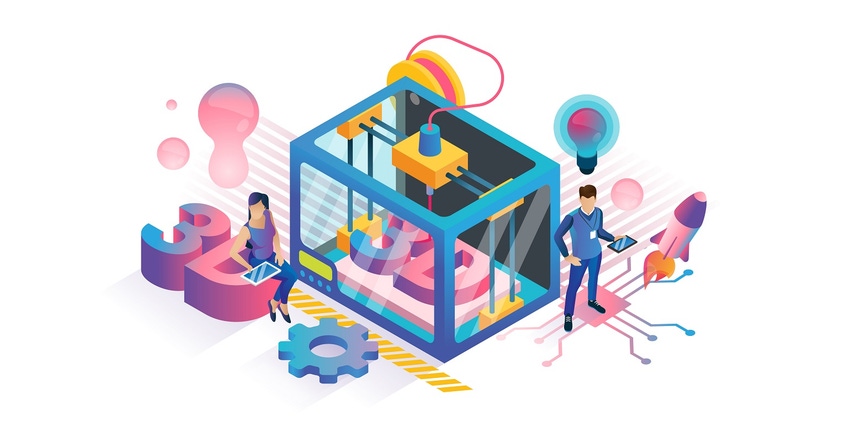Check out new advances in 3D printing and additive manufacturing at Design and Manufacturing West in August.
July 19, 2021

On August 10 through 12, Informa will present The 3D Printing eXperience Theater at Design and Manufacturing West in Anaheim. The theater will off multiple sessions on the topic at no change to exhibition attendees.
Sessions on Tuesday, August 10 will include:
Hear from top medical device manufacturers on how B9Creations' ultra-precision platforms and agile additive process have enabled businesses to move from prototyping to production. As a global additive manufacturer, B9Creations B9[X] Division enables you to customize your 3D printing solution and choose your build volume, resolution, materials, software, regulatory standards, post-processing workflow, application, and even your B9 Expert Team.
3D Printed End-of-Arm Tools: Advantages, Applications, & Use Cases
The use of additive manufacturing (AM) in the robotics and industrial automation industry is becoming more prevalent. Material handling solutions are highly customized to the end-user, and AM can be used to complement and address many of the shortcomings of traditional manufacturing methods like machining and injection molding.
End-of-arm tooling is just one of the applications that can benefit greatly from AM through lightweighting, part consolidation, customization, cost reduction, and time to market. This session covers the different types of AM technologies available in the market today, their advantages over traditional manufacturing methods, considerations that should be taken when designing parts for AM, other industrial applications, and 10 real-world use cases.
Sessions on Wednesday, August 11 will include:
Keynote Panel: Overcoming Quality and Safety Challenges When Choosing to Print with Metal
Production metal 3D printing has finally arrived, but with it comes to risk, safety, and quality issues. Join three industry experts that have been evangelizing, utilizing, and sharing metal Additive Manufacturing technologies across a wide spectrum of vertical markets. With over 50 years of experience between them, they will share the importance of safety and quality when printing with metals. Topics include:
Important safety hazards and potential long-term problems that can come from exposure to heated filaments and metal powders
The need for rigorous quality assurance testing and inspection
Case examples of industry better practices when working with metal equipment and powders
Emerging Automation Technologies Advanced Additive Manufacturing
Although 3D printing and additive manufacturing are forecasted to be the fastest-growing market segments within manufacturing, a gap exists between the available machine control technologies and the actual machine designs being deployed.
This presentation will investigate this gap and explain the technologies available to close it. The resulting benefits include everything from reducing overall machine control costs to improving uptime, part quality, and throughput. Each of the automation technologies you can use is straightforward, but understanding how each impacts the other, along with the overall cost-to-performance calculation, can be complex. Learn how to make sense of it all during this educational presentation.
Sessions on Thursday, August 12 will include:
Keynote: How One Company is Building Sustainable Housing with 3D Printing
Mighty Building company will explain how 3D printing methods and new materials are getting used to build a unique panelized system and more efficient housing designs. This is all produced in the company’s automated manufacturing facility in Oakland, Calif. Mighty Buildings technology has the potential to unlock the needed productivity for large-scale construction alongside the opportunity for reduced emissions, leading to a more sustainable product and future.
Silicone elastomers dedicated to Additive Manufacturing, from prototypes to functional parts
If we focus on the materials for the 3D printing, one can see that the majority of raw materials are thermosetting resins even if the need for soft materials is now a reality for Additive Manufacturing of functional materials.
Flexible materials are mostly used for prototyping with most of the time strong compromises on the physicochemical and mechanical properties. In this lecture, we propose to fulfill this challenge thanks to the new silicone elastomer technologies dedicated to additive manufacturing. Some printing processes and physicochemical properties will be reviewed to show why the silicone elastomers are suitable to meet the needs of 3D-printing soft materials.
Rob Spiegel has covered manufacturing for 19 years, 17 of them for Design News. Other topics he has covered include automation, supply chain technology, alternative energy, and cybersecurity. For 10 years, he was the owner and publisher of the food magazine Chile Pepper.
About the Author(s)
You May Also Like





